Home | Contagion, Pandemics and Humanity | Geography | Gallery | The End of Days | The Prairies | World War I | The War Effort at Home
Next of Kin Memorial Plaque
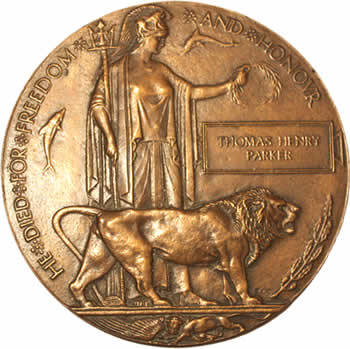
The Next of Kin Memorial was a plaque and scroll given to the next of kin of fallen soldiers in the Great War (WWI). On the one side of the plaque there was an image of Britannia holding a laurel wreath over a box with the commemorated soldier's name inscribed. The words' "He died for freedom and honour" were written around the edges. There are dolphins and a trident featured to represent Britain's naval power. A lion is placed at Britannia's feet, beneath that lion you can see a smaller lion biting into an Imperial Eagle (Germany).
The Next of Kin Memorial plaque became colloquially known as the 'Death Penny' or 'Widow's Penny'.
You can read more about the competition devised to design the Memorial Plaque, and accompanying scroll.
Mollie Garrett
Mustard Gas
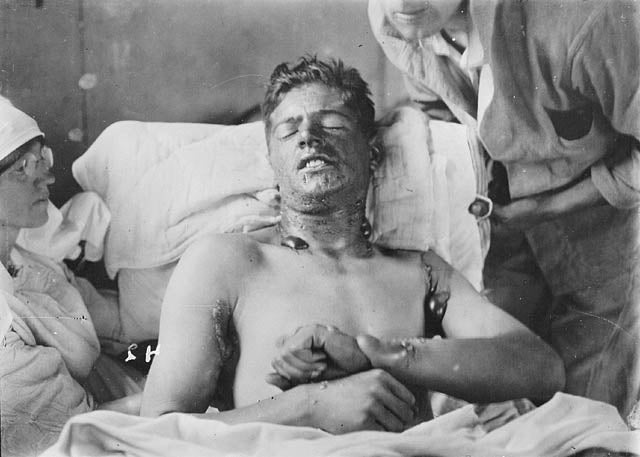
Sulfur Mustard more commonly known as Mustard Gas was a form of chemical warfare used in World War I. It was first weaponized by Germany in 1917. Britain developed their own sulfur mustard weapon the next year. Pure Mustard gas is actually not a gas at all, but instead a viscous colourless liquid. The impure gaseous state is what was used by military forces in the early 20th century. It is said to have a scent similar to mustard, garlic or horseradish.
Mustard gas has a vesicating effect on its victims causing blisters, sometimes so severe as to leave permanent scarring. It is semi-soluble and breaks down very slowly in water. Mustard gas is most harmful in damp areas, including the eyes, nose, and respiratory system. It was effective even through clothing. It was deadly only to a small fraction of its victims, it was however very effective at incapacitation. Mustard gas was used as a weapon through much of the 20th century including in World War II. It is regulated under the 1993 Chemical Weapons Convention. Many studies have been done in the past quarter century that have proved mustard gas a carcinogen.
For further reading on sulfur mustard try the links below:
Enlisting and Conscription of Canadian Troops during World War I
The legal enlisting age was 18, and most soldiers were between 18 and 45, the average being 26 years of age. Many men lied about their age on their application meaning people as old as 80 or as young as 10 served during the first World War. Aproximately 33,000 Canadian men volunteered to fight in World War I. Only 51 percent of Canadian troops during World War I were canadian born, a large percentage were british.
Conscription in Canada began in April 1918. Prime Minister Robert Borden formed a “uninonist party” involving Conservative and Liberal supporters of the war and of conscription. Their main opposition was the Quebecois Liberal leader Wilfrid Laurier. All males between the ages of 18 and 60 who were unmarried and without children were eligible for conscription. Of approximately 400,000 registered Canadians, only 124,588 were added to the Canadian Expeditionary Force and only 24,132 actually made it to Europe.
World War 1 Propaganda
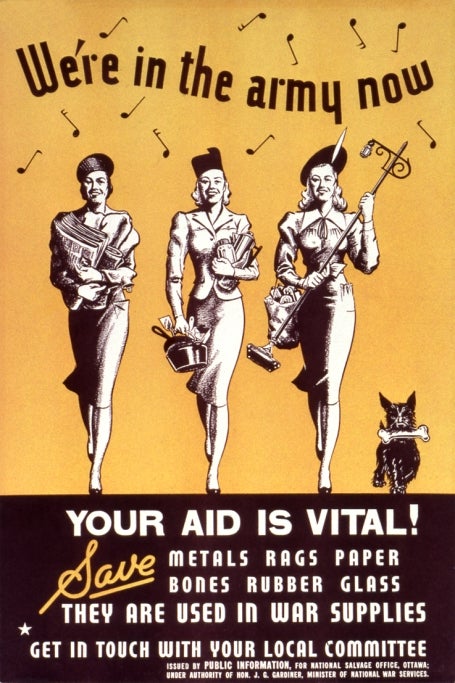
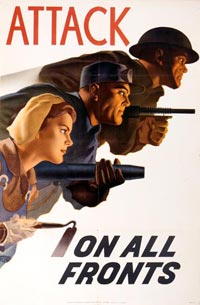

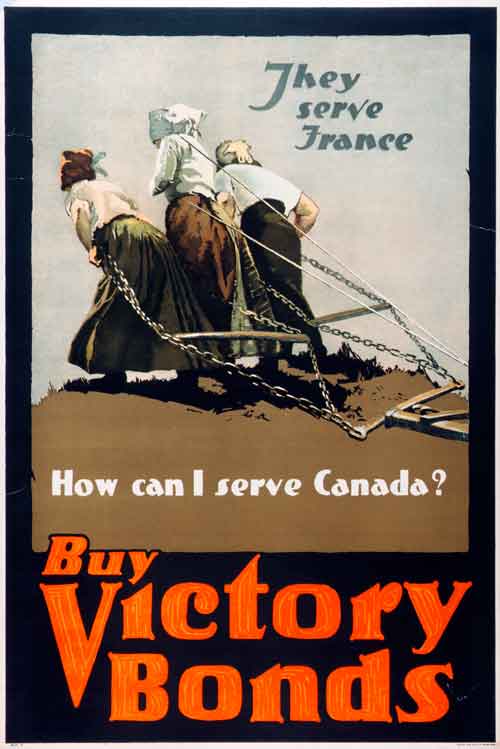

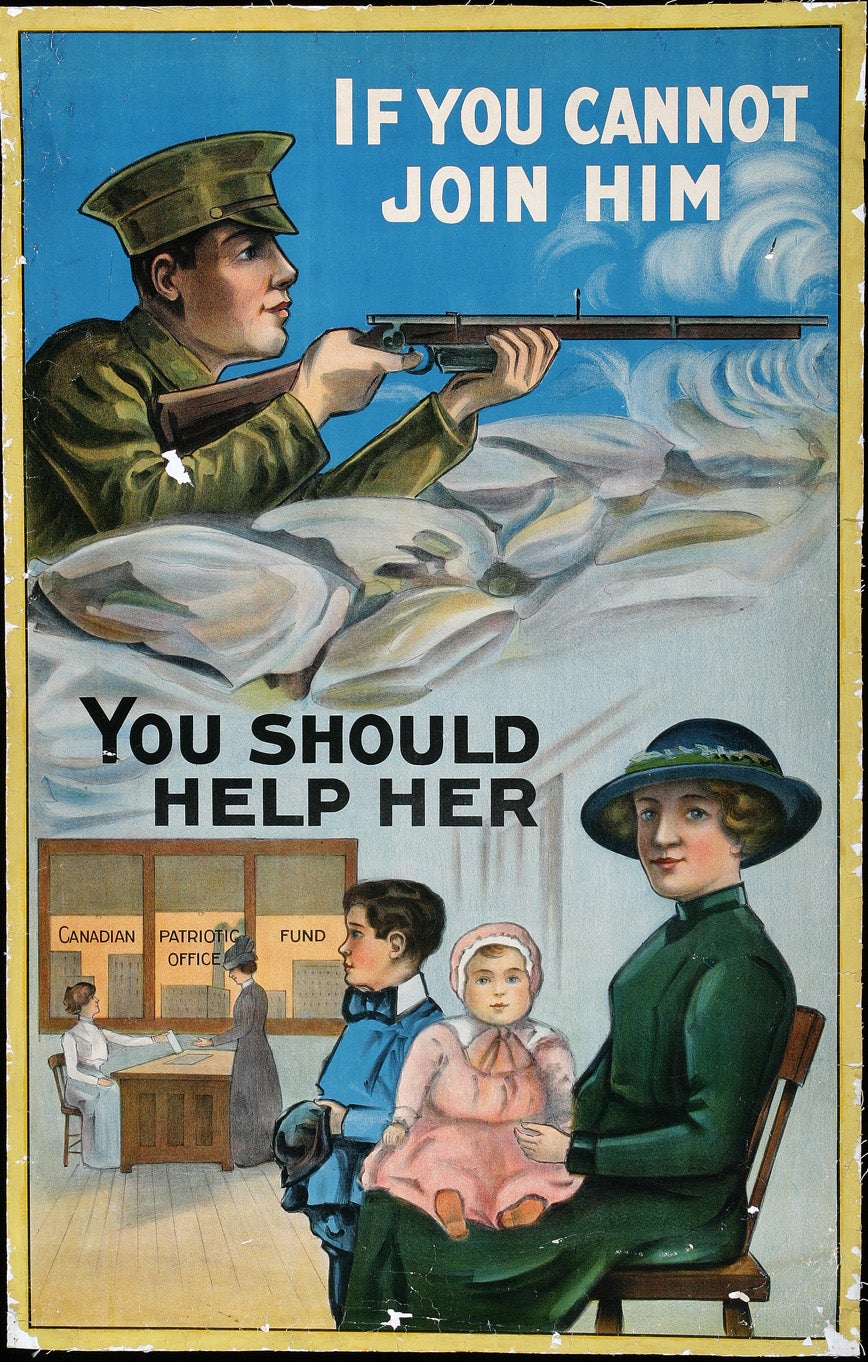
The Machine Gun
It is a common misconception that machine guns were invented in WWI. They were actually invented in the mid 1800s, by Dr. R. J. Gatling. These guns were not what we think of as typical machine guns, they were operated by turning a crank. These guns were even used in the American Civil War. In 1895 John Browning introduced a gas powered gatling gun that removed the necessity to crank the gun by hand. The misconception about the invention of machine guns may have come from the fact that they were not widely used until WWI. The Germans were the first to truly realize their power and importance, especially in traditional line infantry warfare.
Though artillery would actually cause more casualties over the course of the war, it was the machine gun that would take the spotlight among canadian press and politics. Machine guns were devastating to the troops on the front lines, and the Canadian people knew it. Because of the way wars had been fought in the past, lines of soldiers carrying muskets across a battlefield and firing all at once to create a wall of bullets, the machine gun was most devastating in the early years of the war. Forces didn’t have the experience necessary to deal with the machine gun and troops were injured, maimed or killed as they marched toward the German lines.
Further Reading: